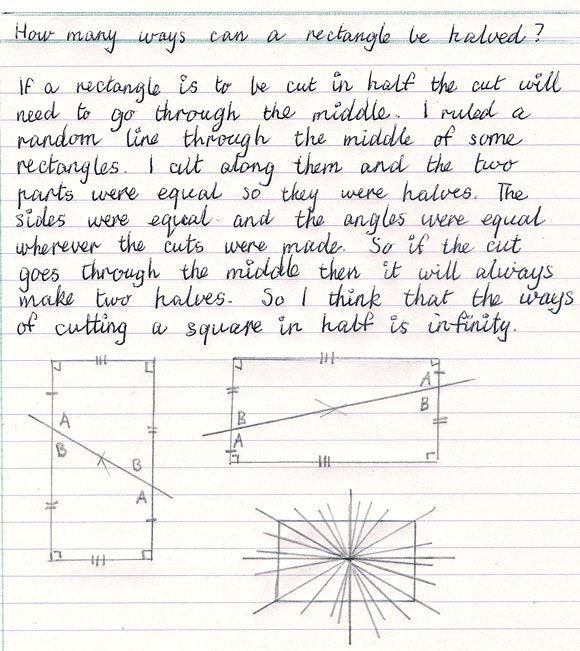Halving a rectangle
The part-whole concept is one of the big ideas in fractions. The part-whole construct is often represented with an area model, such as a shape partitioned into equal parts.
Below is an example of a year 5 student's reasoning about the number of ways any rectangle can be divided in half.
The student started with one example, but started to think deductively when she realised that the relevant angles would be equal 'wherever the cuts were made'.
The student will be able to use more formal deductive reasoning and prove her hypothesis in secondary school after she has learnt the rules applying to parallel lines and pairs of angles.

